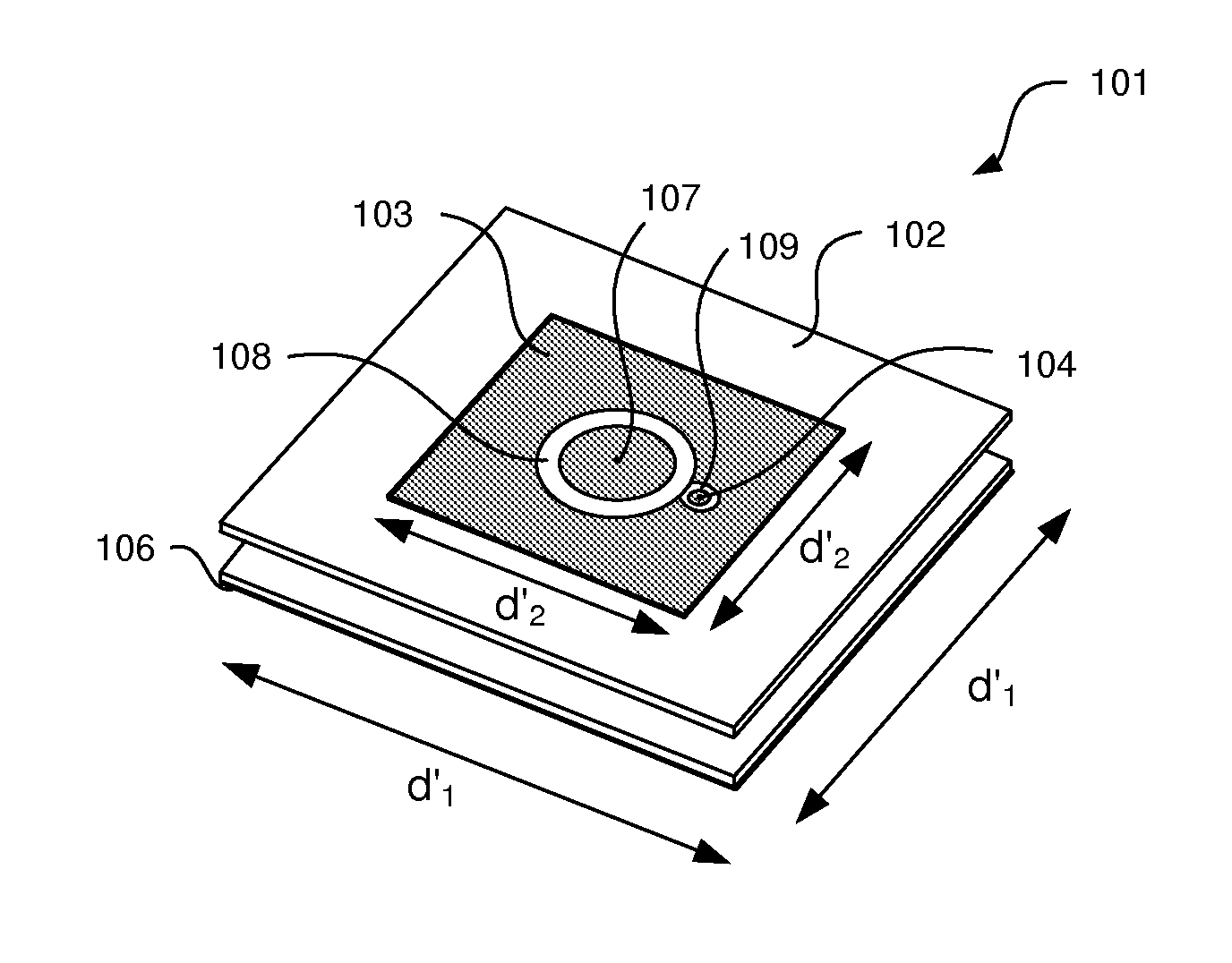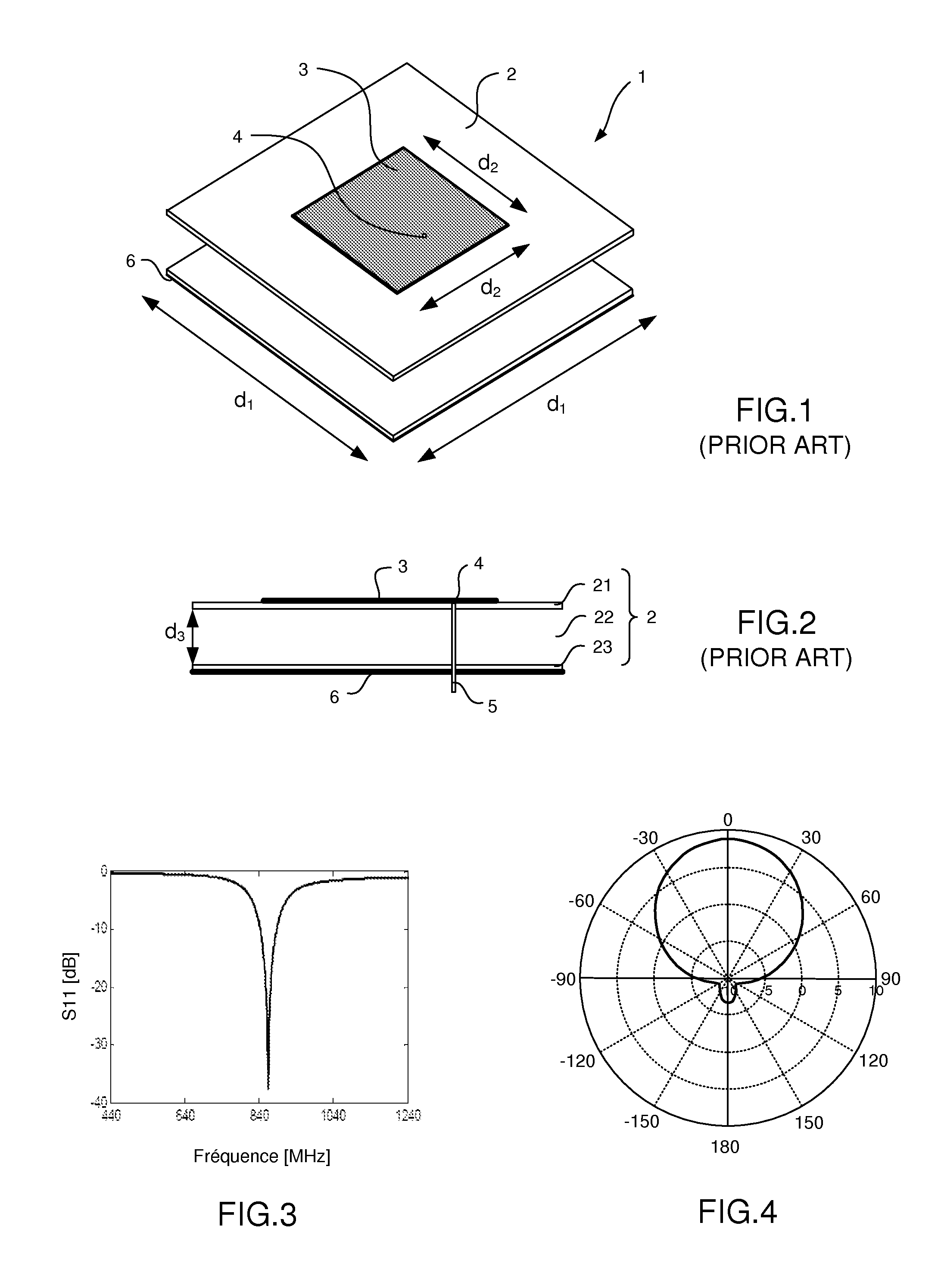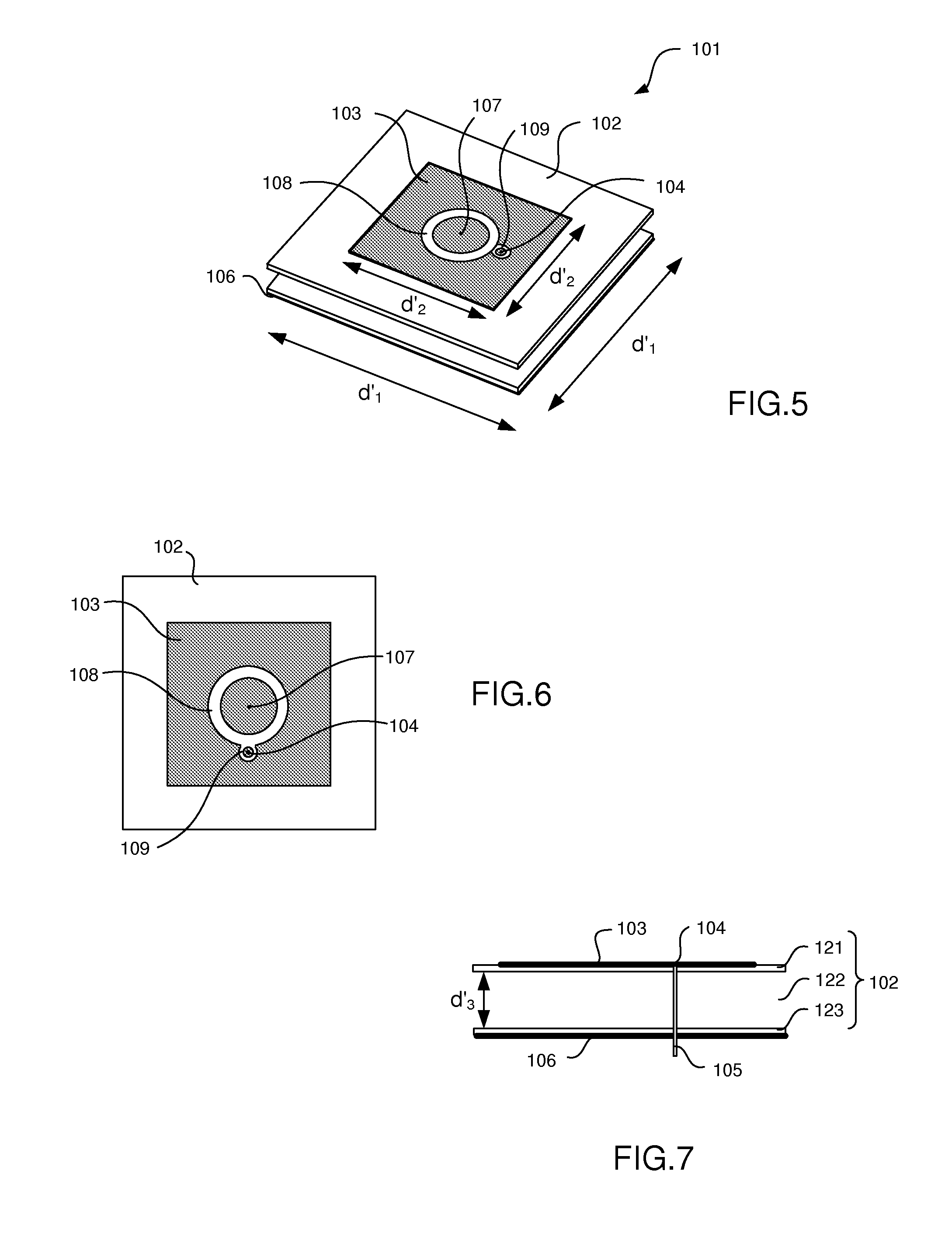Miniaturized Patch Antenna
a patch antenna and antenna technology, applied in simultaneous aerial operations, electrical equipment, structural forms of radiation elements, etc., can solve the problems of large antenna size, poor efficiency, narrow bandwidth, etc., and achieve the effect of improving the symmetry of the radiation pattern of the antenna
- Summary
- Abstract
- Description
- Claims
- Application Information
AI Technical Summary
Benefits of technology
Problems solved by technology
Method used
Image
Examples
first embodiment
[0073]the patch antenna assembly according to the invention is illustrated by FIGS. 5-10.
[0074]In this first embodiment, the patch antenna comprises two slotted rings etched in the patch structure, one surrounding the centre of the patch structure and one surrounding the feeding point.
[0075]In reference to FIGS. 5-7, the patch antenna assembly 101 according to this first embodiment comprises:[0076]a multilayered dielectric or magnetic substrate 102 including at least a top layer 121, a middle layer 122 and a bottom layer 123,[0077]an electrically conductive patch structure 103 on the upper surface of the top layer, the patch structure having a centre point 107 located at the centre of the patch structure a feeding point 104 electrically coupled to a feed line 105, and[0078]a ground plane 106 on the lower surface of the bottom layer.
[0079]The top layer 121 and the bottom layer 123 are made of FR4 or other substrate type having the same parameters than the top layer 21 and the bottom ...
second embodiment
[0100]The central ring can also be moved away from the feed ring. It is illustrated by FIG. 11 and FIG. 12. In this second embodiment, the central ring and the feed ring 109 have outer diameters D and d and widths W and w, respectively and they are separated from each other by a non-zero distance e. The distance e is a function of the parameters D, d, W and w.
[0101]The resonance frequency of the antenna assembly is depending on the parameters D and W of the central ring. More specifically, the width W of the central ring has an effect on the inductance of the antenna and its diameter has an effect on the capacitance of the antenna. The width W of the central ring can vary from 2 mm to 12 mm and the diameter D from 2 cm to 4.5 cm. In the configuration of the FIGS. 5 to 7, the resonance frequency of 866.3 MHz (inside the UHF band) is obtained by a width W=8 mm and D=4 cm.
[0102]The width w and the diameter d of the feed ring have little influence on the resonance frequency.
third embodiment
[0103]As mentioned hereinabove, the feed ring has no influence on the size of the patch antenna. Consequently, in a third embodiment illustrated by FIG. 13, the antenna assembly does not have feed ring. The central ring alone is enough to reduce the size of the antenna structure. This central ring is not necessarily circular but may be elliptic.
[0104]The central slotted ring must concentrate the surface current at the centre of the patch structure 103. This central slot is not necessarily a ring. This slot can have different shapes as illustrated by FIGS. 14-17. This slot must surround the centre point of the patch structure 103. Preferably, this slot is centered on the centre point of the patch structure.
[0105]In FIG. 14, the central slot is a square centered on the centre point of the patch structure, in FIG. 15, the central slot is a hexagon and in FIG. 16, the central slot is a triangle. The feeding point can be surrounded by a slot 109 or not. The shape of the slot 109 is prefe...
PUM
 Login to View More
Login to View More Abstract
Description
Claims
Application Information
 Login to View More
Login to View More - R&D
- Intellectual Property
- Life Sciences
- Materials
- Tech Scout
- Unparalleled Data Quality
- Higher Quality Content
- 60% Fewer Hallucinations
Browse by: Latest US Patents, China's latest patents, Technical Efficacy Thesaurus, Application Domain, Technology Topic, Popular Technical Reports.
© 2025 PatSnap. All rights reserved.Legal|Privacy policy|Modern Slavery Act Transparency Statement|Sitemap|About US| Contact US: help@patsnap.com



